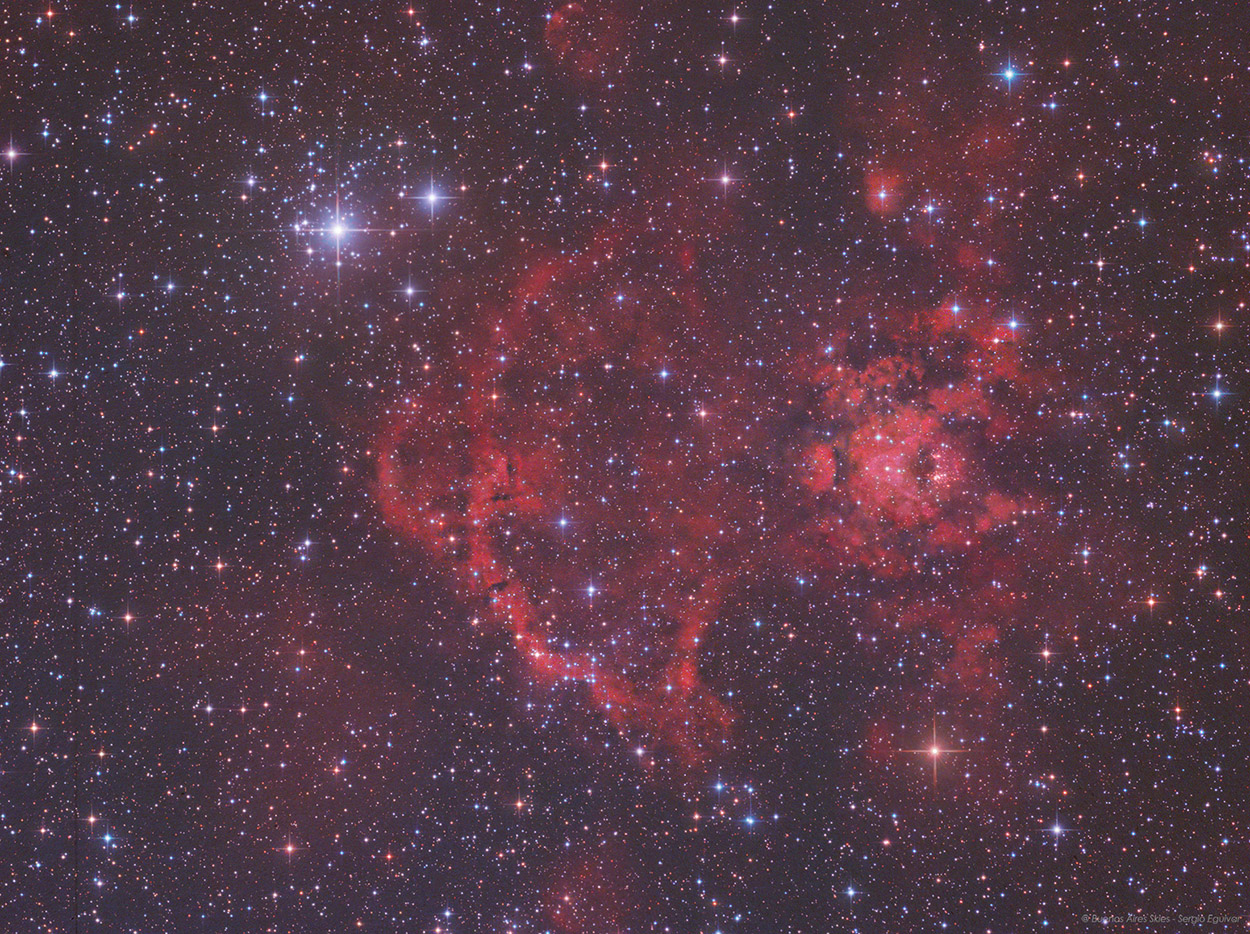
| HOME |
NGC 3247 - RCW 49 - WESTERLUND 2 - IC 2581
AKA THE WHIRLING DERVISH NEBULA
CLUSTER ASSOCIATED WITH NEBULOSITY IN CARINA (THE KEEL)
(Image centered at: ra 10 h:25 m / dec - 57º 46')
CLICK THE IMAGE FOR A LARGE VIEW
May 2022, Sarandi, Gualeguayachu, Entre Rios, Argentina
DATA
TYPE: Open Cluster associated with nebulosity r
APPARENT DIAMETER: 1 degree FOV
VISUAL BRIGHTNESS: IC 2581 4,2; NGC 3247 7,6
DISTANCE: 13,700 light years
IMAGE INFORMATION1
INSTRUMENT: 8" ORION OPTICS UK (Ultra Grade Optics) w/Televue Paracorr working at at f5,75
CAMERA: QSI 583 WS
MOUNT: SKY WATCHER NEQ6, OAG with Starligh Xpress Lodestar
FILTERS: Baader LRGB Set
SKY CONDITIONS: rural skies - Bortle 4 to 5
EXPOSURES: LHaRGB (40,40,40,40,40)
OBJECT DESCRIPTION AND IMAGE SESSION
RCW 49, also known as NGC 3247, is a H II region located 13,700 light years away and it is commonly known as the Whirling Dervish Nebula. It is a dusty stellar nursery that contains more than 2,200 stars and is about 300-400 light years across. RCW 49 is recognized as among the brightest and most massive HII regions in our galaxy. Within NGC 3247 we have Westerlund 2: an obscured compact young star cluster perhaps even a Super Star Cluster.
Super Star Clusters are very massive young open clusters that are thought to be the precursors of a globular cluster. These clusters called "super" because they are relatively more luminous and contain more mass than other young star clusters, however, does "super open clusters" do not have to be physically larger than other clusters of lower mass and luminosity. They typically contain a very large number of young, massive stars that ionize a surrounding HII region
A very humid and hazy night sky with regular seeing
NGC 3247 - RCW 49 - WESTERLUND 2 - IC 2581
AKA THE WHIRLING DERVISH NEBULA
ANNOTATED IMAGE